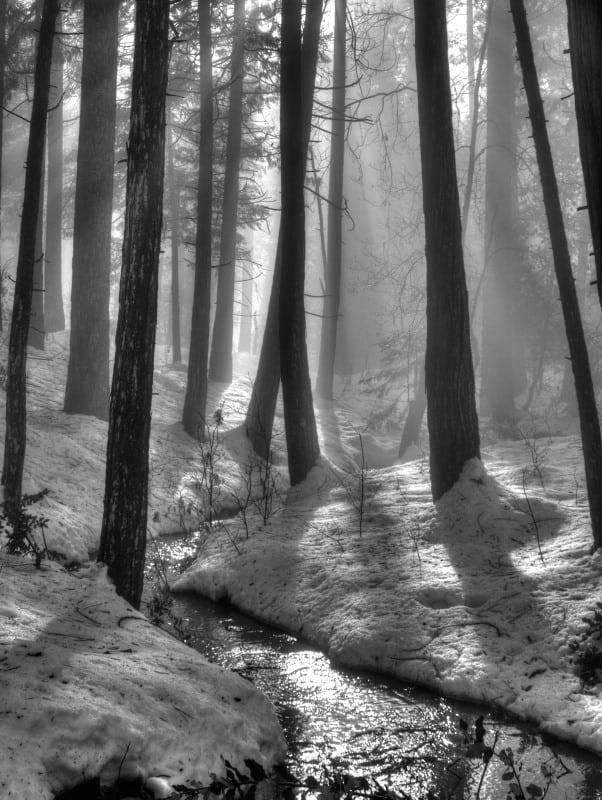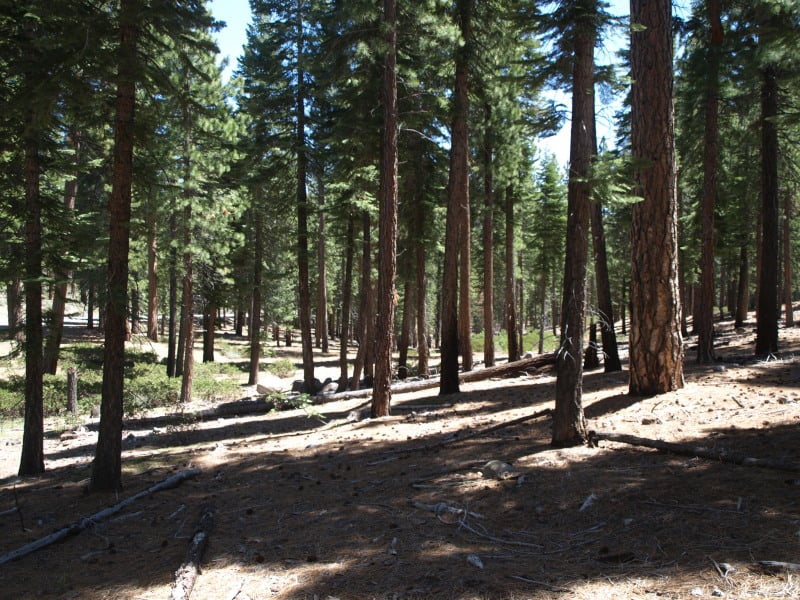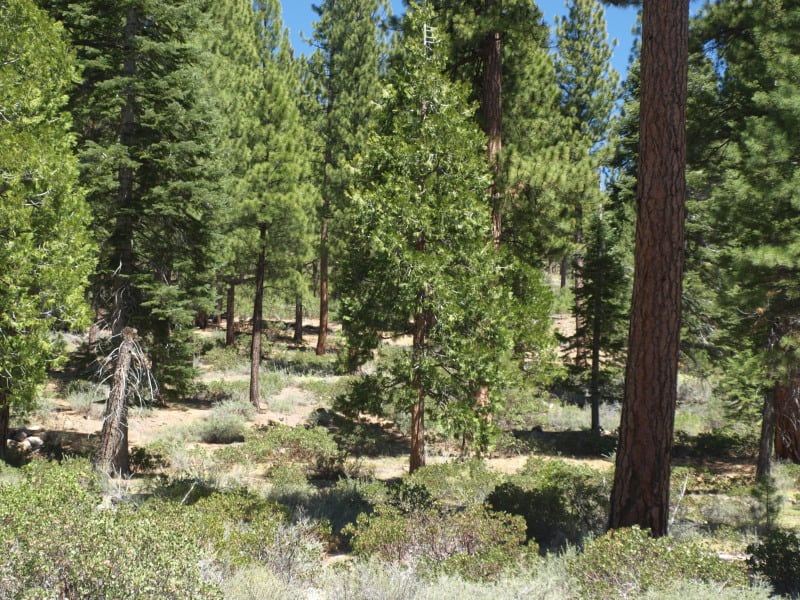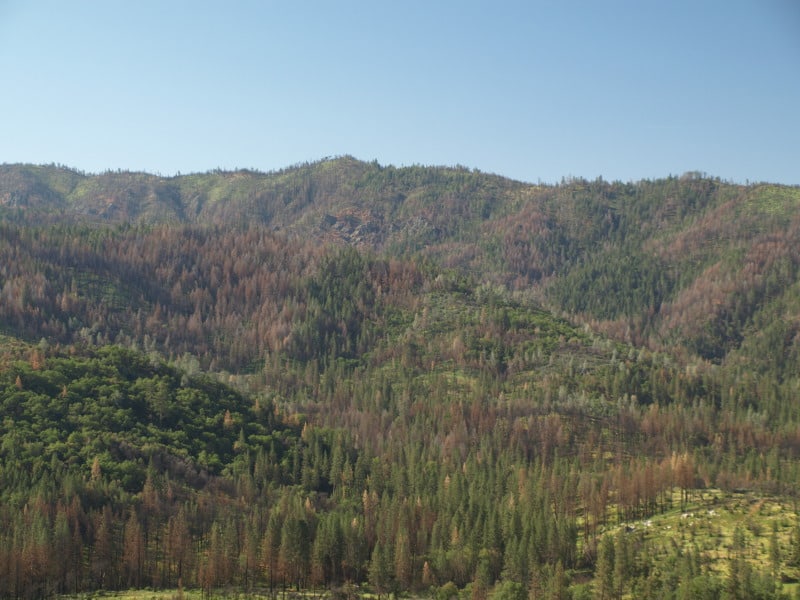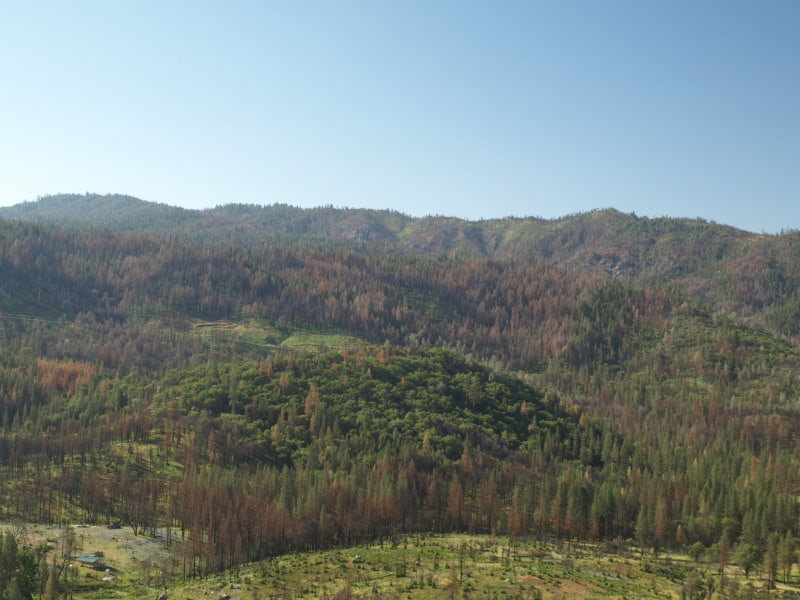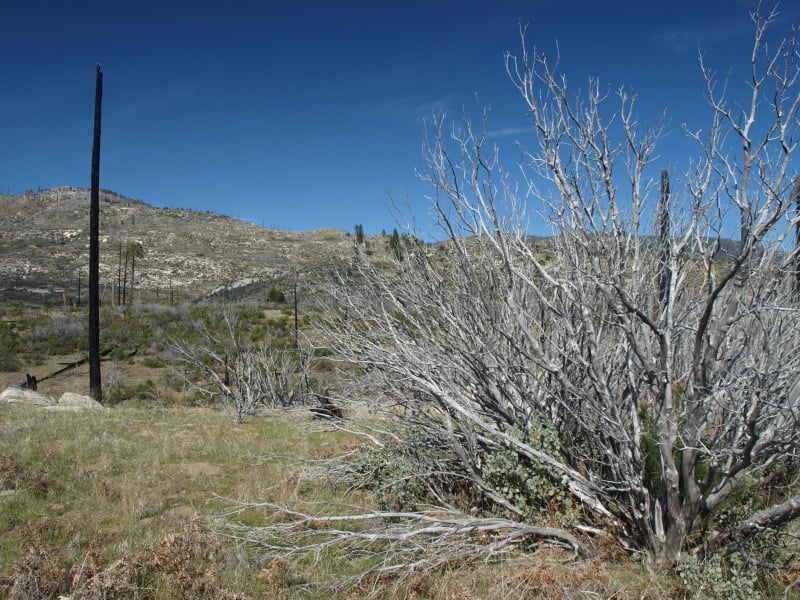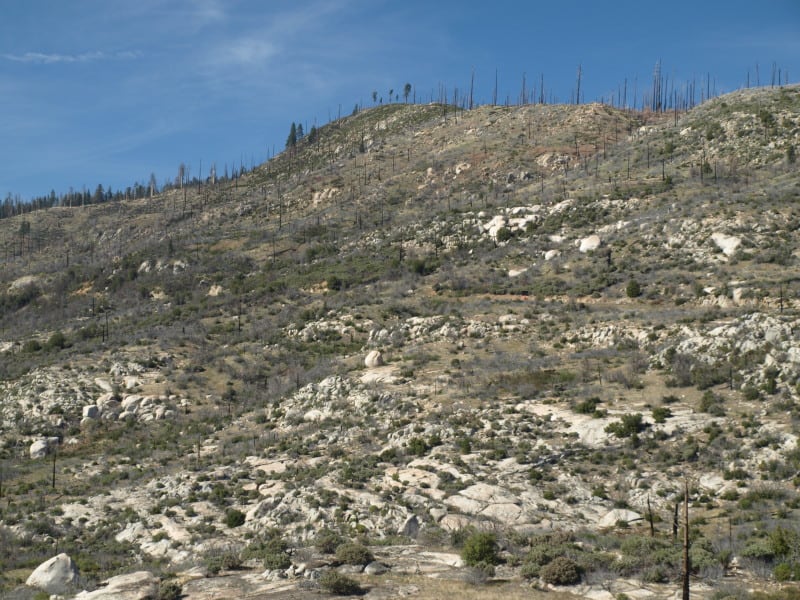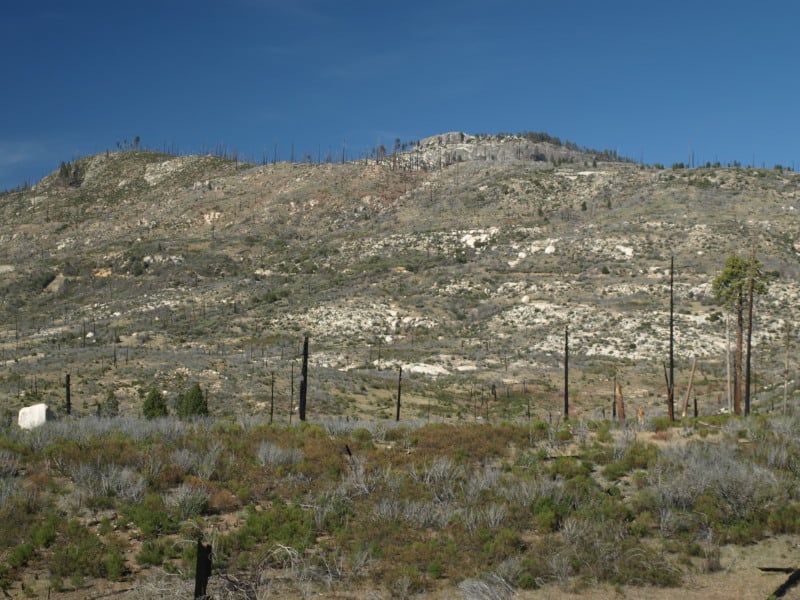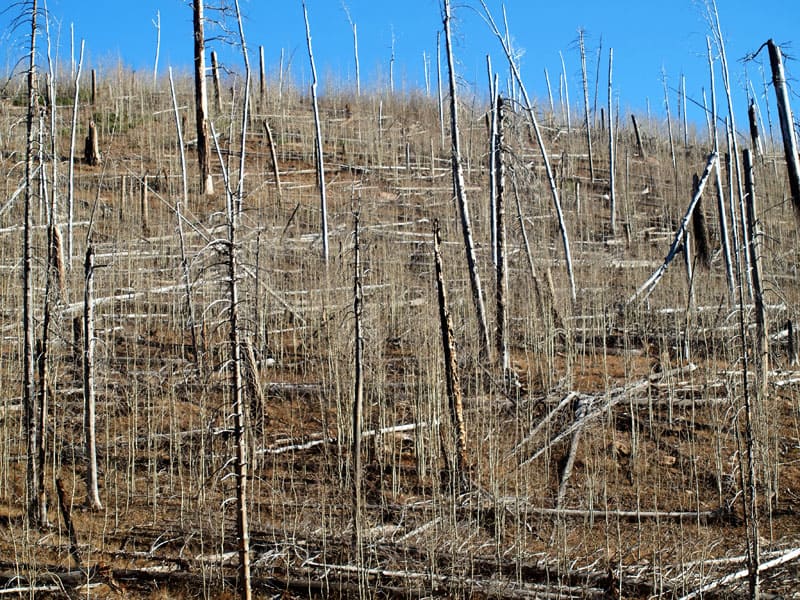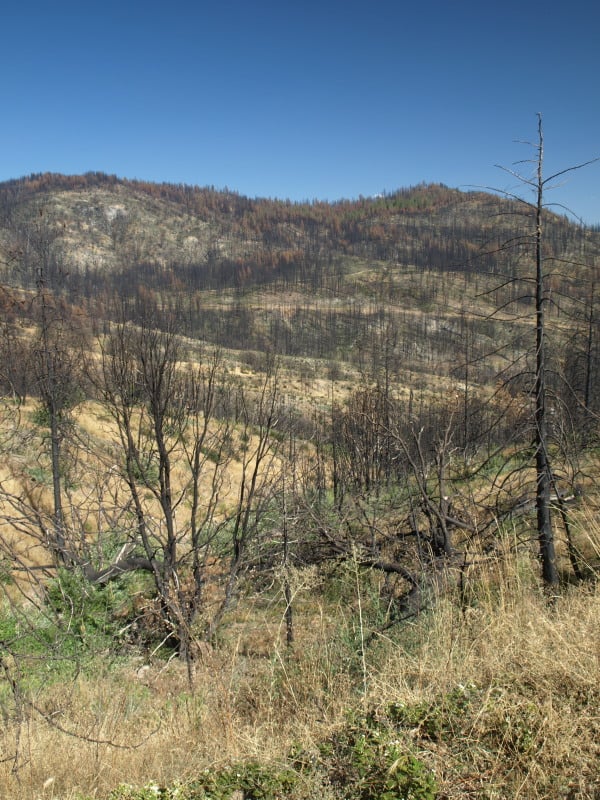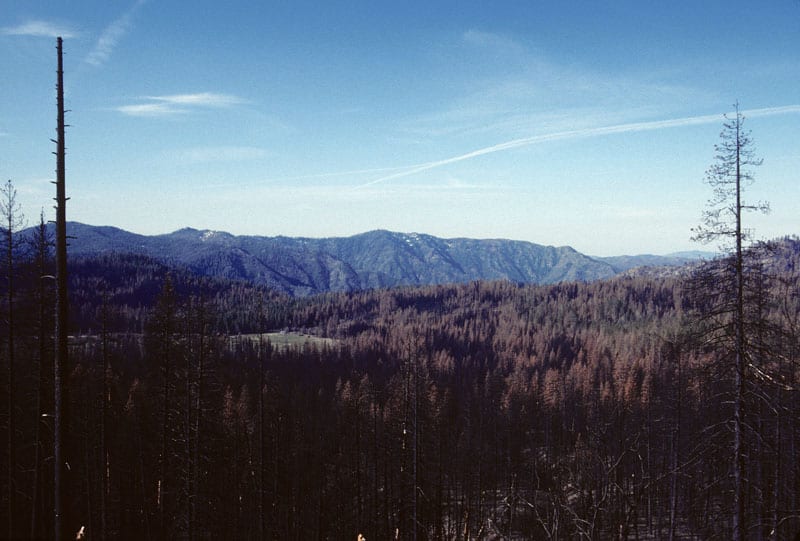There are scary and uncertain times ahead for our forests. There is just too much “Fog of War” going on for the public to sort out and fact-check for themselves. Even the ‘fact-checkers’ should be suspect, until proven reliable and bias-free. The rise of ‘fake news’ has blurred multiple lines, and many people, even in mass media, fall for the hoaxes, satire or misinformation. (Example: An article appeared on the Grist website, showing concern about a recall of “Dog Condoms”, presenting the link to www.dogcondoms.com )
Reforestation
Humans sparked 84 percent of US wildfires, increased fire season over two decades
How should we deal with the new math on forest fires?
If this article published in the February Proceedings of the National Academy of Sciences is not a fluke then it would seem to me that our expanding population dictates the need for more forest management not less. The less desireable alternative would be to severely restrict access to our federal forests. The main conclusion of the article is that humans sparked 84 percent of US wildfires and caused nearly half of the acreage lost to wildfire. This number excludes intentionally set controlled burns.
From the above, I would deduce that human initiated fires caused proportionally less acreage loss because they were closer to civilization and to forest access points and therefore closer to and more easily accessed by suppression resources. The fact that nearly half of the wildfire acres lost occur in these areas suggests that we would get more bang for our tax dollars if we increased and focused federal sustainable forest management around high traffic areas easily accessible to humans.
Knowing that humans who cause wildfires are, by definition, either careless or malicious, we might deduce that they are generally not inclined to put great effort into getting to their ignition set points. This would lead us to consider that human caused fires might prove to be in less difficult terrain areas with high human traffic. Fires like the Rim fire being the exception. That, if true, would suggest that forest management for risk reduction on these sites could be done at lower costs per acre than other less accessible forest acreage. Focusing forest management efforts on these high benefit to cost areas would have the biggest bang per tax dollar expended in order to lower the total cost of federal wildfire control. If my thinking is correct, this should play a large part in setting the priorities as to where we should: 1) apply controlled burns to reduce ground and other low fuels, 2) utilize commercial thinnings to reduce ladder and proximity fuels or 3) use commercial regeneration harvests to create greater variation in tree heights between stands in order to provide fire breaks for crown fires when appropriate for the site and species. The net effect would be positive for all species including endangered and threatened species. There would still be plenty of lightning caused wildfire, controlled burn hotspots/breakouts and a significantly reduced acreage of human caused fires to satisfy those who don’t mind national ashtrays. Reducing the number and size of human caused fires would also free resources to attack lightning fires earlier and harder when allowing the fire to burn was not an option.
Pertinent Quotes:
- “After analyzing two decades’ worth of U.S. government agency wildfire records spanning 1992-2012, the researchers found that human-ignited wildfires accounted for 84 percent of all wildfires, tripling the length of the average fire season and accounting for nearly half of the total acreage burned.” Italics added
- “”These findings do not discount the ongoing role of climate change, but instead suggest we should be most concerned about where it overlaps with human impact,” said Balch. “Climate change is making our fields, forests and grasslands drier and hotter for longer periods, creating a greater window of opportunity for human-related ignitions to start wildfires.”” Italics added
- “”Not all fire is bad, but humans are intentionally and unintentionally adding ignitions to the landscape in areas and seasons when natural ignitions are sparse,” … “We can’t easily control how dry fuels get, or lightning, but we do have some control over human started ignitions.””
Service Contract Re-visited
In my last adventure, I decided to pass through an area of the Tahoe National Forest, where I worked in 1996 and 1997. During that time, I worked on fire salvage, blowdown salvage, insect salvage and roadside hazard tree projects. There was also this Service Contract, which reduced fuels without cutting trees over 9.9″ dbh. The logger had three varied types of cutting machines, each of them with their strengths and limitations. He was a crusty old guy, who didn’t like the Federal “oversight” of his work.
I usually liked to change these loggers’ perception of what inspectors do. He wasn’t used to getting “written up” for doing good work but, he was still quite wary of me. I once caught him damaging the bark of a leave tree with his machine, then getting off it, and applying some dirt to the wound (to hide it). As he was getting back to his seat, he saw me. I gave him the “naughty, naughty” hand signal, and walked over there. I waited to see how he would react to getting caught. Surprisingly, he kind of hung his head, and was quiet, for once. So, I told him that there is an acceptable level of “damage” in this kind of work and he wasn’t anywhere near close to it, yet. I think our relationship changed, a little, after that agreement.
One of the keys to success was the ability to do a cool prescribed burn. All too often, fuels are still too thick and the burn is a bit hotter than the residual trees can stand. In this case, the firefighters did well in achieving a nice, cool and effective burn. On the west-facing slopes, the brush has grown back, somewhat. That is to be expected, and will continue, until it is shaded out.
As far as resilience to fire and drought, it is pretty clear that the spacing is very good. The brush looks like it can be burned safely, on a regular basis. The pines also seem to be quite healthy and vigorous. Keep in mind, this area along Highway 89, in the eastside pine zone, is in a rainshadow east of the Sierra Nevada Crest. There are some western junipers up on the ridgetop, and the Nevada desert is 15 miles away.
The Rim Fire Salvage Seems Done
My last expedition included another trip to Yosemite, and the Rim Fire. I DO think that there are enough dead trees for the owls to “enjoy” in their respite from breeding. Then again, maybe this new “Circle of Life” will provide more food, in the form of baby owls, to larger predators?
You might also notice the ongoing beetle kills, which will increase when spring and summer come into play. This next picture shows the little bit of harvesting that was done along Highway 120. You can see the drainage where the Highway sits, and you can also see how wide the hazard tree units are. The barren area in the foreground is/was chaparral.
I am glad that the Forest Service “took my advice” about getting the work done before there was any chance to appeal to a more liberal….errr….. higher court. However, is THIS what we want our salvaged wildfires to look like? This area should be ready for re-burn in a few short years. Also, be reminded that two of the plantation salvage projects did not sell, despite the prompt action by the Forest Service. My guess is that SPI was low-balling the Forest Service to get those smaller trees at less than “base rates”. That means that the prices remain the same (rock bottom) but, some of the non-commercial treatments would be dropped. It appears that the Forest Service wasn’t willing to go as low as SPI wanted. So, those perfectly good salvage trees will be left, “for wildlife”, it appears.
Happy Earth Day!
26 years after “protected” forests burned, in Yosemite National Park, this is what we now have. Chances are, it will burn again, before conifer trees can become established enough to resist the next inevitable wildfire. You might notice that even the manzanita is having trouble surviving. I doubt that John Muir intended this on public lands. This landscape is probably the future of parts of the Rim Fire, within Yosemite National Park.
Update From the Yosemite “Laboratory”
Here is a stitched-together panorama from the Foresta area of Yosemite National Park. I’ll have to pair it up with my historical version, one of these days. Restoration processes seem to be minimal, as re-burns continue to ravage the landscape, killing more old growth forests and eliminating more seed sources. Even the brush is dying off, due to a lack of organic matter in some of those granitic soils. With the 200-400 year old trees gone, we have to remember that these stand replacement fires, in this elevational band of the Sierra Nevada, weren’t very common before the 1800’s.
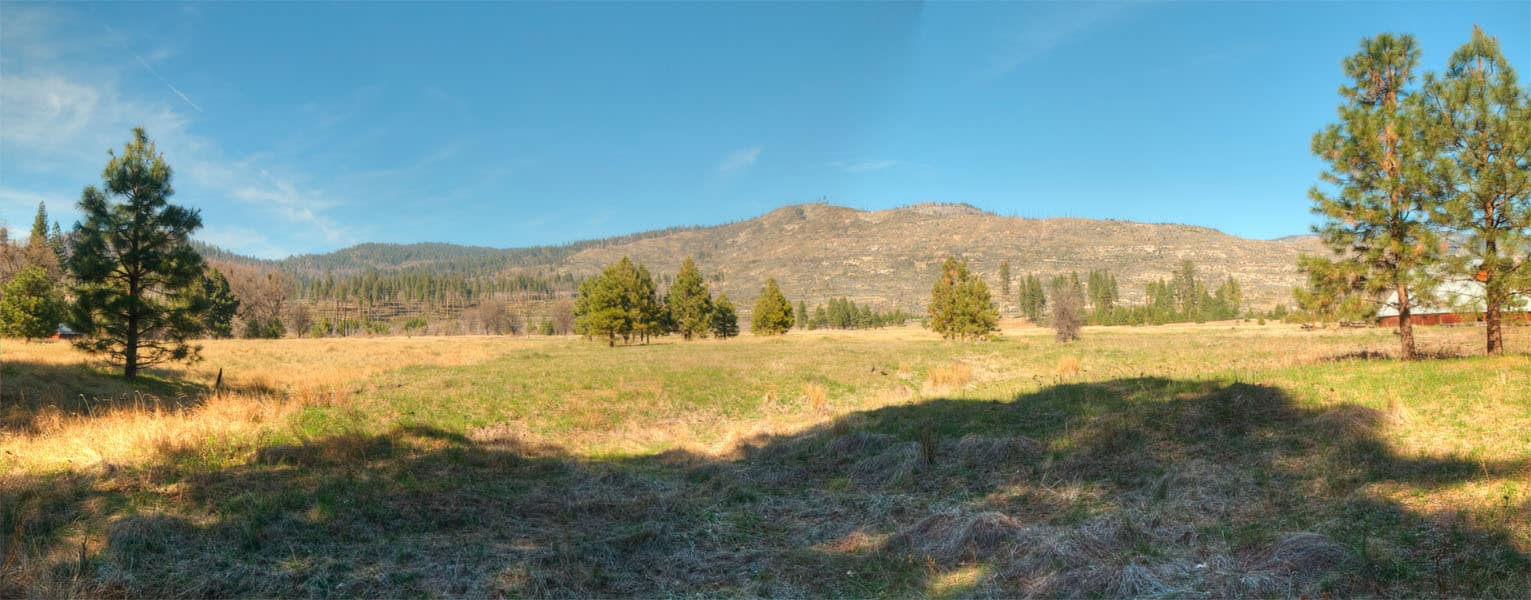 Yes, it IS important that we learn our lessons from the “Whatever Happens” management style of the Park Service. Indeed, we should really be looking closely at the 40,000+ acres of old growth mortality from the Rim Fire, too! Re-burns could start impacting the Rim Fire area, beginning this fire season.
Yes, it IS important that we learn our lessons from the “Whatever Happens” management style of the Park Service. Indeed, we should really be looking closely at the 40,000+ acres of old growth mortality from the Rim Fire, too! Re-burns could start impacting the Rim Fire area, beginning this fire season.
Grand Canyon Fire Recovery
This is an interesting picture from the North Rim of Grand Canyon National Park. The fire burned and killed off all the pines but, the underground mass of aspen roots and shoots survived. I wonder how a pine component could “naturally” come back, or, did Indian burning favor old growth pines? Certainly, the higher pine forests of the Kaibab Plateau are overstocked and at risk, today.
Rim Fire Update
Apparently, enough of the hazard trees within the Rim Fire on the Stanislaus NF have been cut so that the travel ban has finally been lifted, after more than a year. I heard one report that says that the litigation has failed at the District Court level, losing their pleas to stop the logging three times. The article below includes the Appeals Court but, I doubt that an appeal has been seen in court yet. It seems too soon after the District Court decision for the appeal to be decided.
http://www.calforests.org/rim-fire-update-final-motion-halt-restoration-forestry-rim-fire-denied/
Since the Rim Fire tore through the area and devoured over 250, 000 square miles of National, State and private forested land, the community has come together to put together a solution with positive environmental, economical and social sense. The whole effort to restore forests has been very successful due to cooperation of a diverse group of individuals, organizations and government agencies.
(Edit: Thanks to Matt for pointing out the acres/square miles error. That should be 250,000 acres.)
With a monster storm approaching California, we should be seeing some catastrophic erosion coming from the Rim and King Fire areas. Of course, very little can be done to prevent erosion on the steep slopes of the canyons with high burn intensity. Standing snags tend to channel water, while branches and twigs on the ground can hold back a surprising amount of soil. This flood event would have been great to document through repeat photography but, it appears that opportunity will be lost, too.
Bark beetle activity has also spiked where I live, northwest of the Rim Fire.
Throwback Thursday, Yosemite-style
I’ve found my hoard of old A-Rock Fire photos, from 1990! I will be preparing a bigger repeat photography article, after I finish selecting and scanning. Like several other fires this summer, the A-Rock Fire started in the Merced River canyon, burning northward. I really believe that this is the model of what will happen to the Rim Fire, if we do nothing to reduce those dead and dying fuels. Active management opponents never want to talk about the devastation of re-burns, as an aspect of their “natural and beneficial” wildfires. Most of those snags have “vaporized” since this 1989 wildfire. Indeed, this example should be considered when deciding post-fire treatments for both the Rim Fire and the King Fire, too.
It should be relatively easy to find this spot, to do some repeat photography, along the Big Oak Flat Road.
No TRO for the Rim Fire Salvage!
As I predicted, there will be no TRO for the Rim Fire, from District Court. Once the sales are sold, restoration work can begin. Let’s hope that SPI has an army of fallers, ready and waiting. I also hope that they will leave the plantation salvage for last. *smirk*
Sonora, CA –A Federal Judge in Fresno has denied a temporary restraining order regarding the lawsuit filed against the Rim Fire Recovery Record of Decision.
Forest Service Spokesperson Wyn Hornbuckle says, “We are pleased with the court’s decision.” He would not comment further.
As reported earlier this month, three environmental groups including the Center for Biological Diversity were seeking an injunction to halt logging within the 37 occupied California spotted owl territories within the burned area. The Chair of the Yosemite Stanislaus Solutions (YSS) group and President of Sierra Resource Management, Mike Albrecht, worked with local environmental groups and the Forest Service to hammer out a compromise on the Rim Fire Record of Decision. He applauds the Judge’s decision.
http://www.mymotherlode.com/news/local/223061/logging-injunction-denied.html
